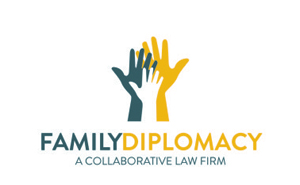Comparison: Collaborative Law versus Litigation and Mediation
The Collaborative Law Institute of Texas provides the following table which compares collaborative family law to mediation and traditional litigation:
|
Collaborative Law |
Litigation |
Mediation |
Comments and Explanations |
|
| Each party has independent legal advice |
yes |
yes |
sometimes |
Mediators cannot give legal advice to spouses. Sometimes (but rarely in Texas) clients will go to mediation without lawyers. This will work in simple cases, but not in complex cases where parties need advice about their legal rights. |
| The parties create customized solutions to fit their specific needs |
yes |
no |
yes |
Judges are required to follow specific rules and guidelines that might not fit every situation. |
| The parties are in control of the pace of the divorce process |
yes |
no |
sometimes |
Mediation is often part of the litigation system. Parties are required to try to settle through mediation before they go to court. Mediation sessions often feel coercive to parties, who have the threat of court looming before them. In the Collaborative Law model, the parties decide on the pace they want to proceed, and know that they might not get their interests satisfied if they are not willing to be flexible about timing. |
| Parties have a structured process to follow as a “roadmap” to resolution |
yes |
no |
no |
Collaborative Law is a structured process designed to promote settlement. |
| Parties cooperate in providing information needed to make informed decisions |
yes |
no |
sometimes |
The litigation model includes “discovery,” which is often cumbersome and wastes the parties’ resources. Lawyers sometimes use a strategy where they give the other party only the minimum required amount of information, hoping to gain an advantage at trial. |
| Parties are encouraged to treat the other party respectfully and to preserve important relationships |
yes |
no |
yes |
Litigation pits people against each other in a win/lose system. |
| Parties have assurance that their spouse’s (or the other party’s) lawyer will not use their words against them |
yes |
no |
no |
Collaborative lawyers can never take a case that is proceeding under the Collaborative Law model to court. If a case needs litigation, the parties get different lawyers for court. |
| Parties learn new, more useful ways to communicate as they move forward as co-parents |
yes |
no |
no |
In mediation, the parties sometimes never see each other. The mediator uses “shuttle diplomacy” to try to get the parties to reach an agreement. |
| Both parties have support from experts on financial, parenting and other issues that arise in their case |
yes |
sometimes |
no |
Experts are hired in litigation, but generally each party hires his or her own expert to support his or her position. |
| The parties receive reliable information from experts when they need more information |
yes |
no |
no |
Experts hired for litigation are expected to support a party’s position. Often, each expert has wildly different opinions, leaving the parties and the judge wondering if either is reliable. |
| The parties have a safe place to express their true interests and negotiate a workable resolution |
yes |
no |
no |
While mediation taken alone might provide a safe environment for negotiation, when paired with litigation, it often feels coercive and overwhelming. |
| Solutions are based on what the parties want to achieve at a high level (their interests) |
yes |
no |
sometimes |
Some mediators use interest-based negotiation methods, but often, without ongoing guidance, the parties revert to positional bargaining. |
| Parties are encouraged to look at the long- and short-term effects of their decisions |
yes |
no |
sometimes |
Neutral financial professionals and child specialists bring a variety of services to clients in Collaborative law. In litigation, they are just hired for the trial. |
| Parties can be forced to do or not do something |
no |
yes |
no |
Mediators cannot force a settlement on parties. Arbitration is another alternative that does guarantee resolution. |
| Parties are guaranteed that they will have a resolution to their problems |
no |
yes |
no |
A judge or jury will make a decision, even if it seems to be the lesser of two evils, or to produce an unfair result. |
| Parties feel threatened that they will lose at trial if they do not do what the other party wants |
no |
yes |
yes |
As long as the parties are operating within the Collaborative Law model, no one will go to court or threaten to go to court. |
| Parties and lawyers work together to solve a problem |
yes |
no |
sometimes |
Lawyers, clients and experts all have the same goal in Collaborative Law – to find a way to resolve the parties’ differences in a way that protects what is most important to them. |
If you have questions regarding the collaborative process and wish to schedule a consultation with a Florida attorney who has received advance training in interdisciplinary collaborative law, call The Law Firm of Adam B. Cordover, P.A., at 813-443-0615. You may also fill out our contact form.




Leave a Reply
Want to join the discussion?Feel free to contribute!